#2: Open this e-mail to see a donkey drinking a pint of beer
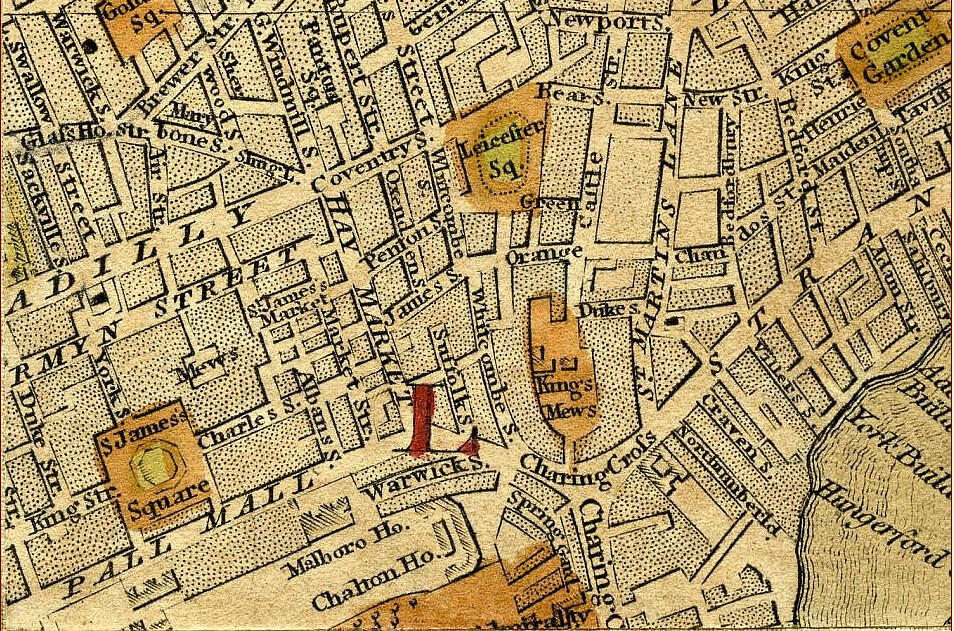
An important question, after you’ve decided that you’re going to visit every mews in Greater London, is: what exactly is a mews?
Two things to know about English royalty in the 1300s: they spoke French, and they loved hawks. Before someone ruined everything by inventing shooting things in the head, hawks were a key part of hunting - they’d fly off and hopefully bring you back a squirrel for your tea.
But you had to be careful when your hawks were moulting, or as it was called then, mewing - from the French muer (to change): you didn’t want them messing up their new feathers before they’d finished growing. So when they were mewing, you kept them safely secured - in a mews.
The King’s Mews was on the site of what’s now Trafalgar Square. Move forward a few centuries to the reign of Henry VIII - the Royal stables in Bloomsbury get burned to the ground for reasons unrecorded (do horses smoke ciggies?), and rather than rebuilding them the king simply repurposes the Mews - hawks out, horses in, unwittingly redefining the meaning of the word at the same time.
The development of the West End of London in the 18th century involved something novel called ‘planning’, as rows of townhouses went up on new networks of streets across the area. As horses were a fairly key part of city life, they had to plan for this too - if you had a big swanky town house you probably had a horse to pull you to and from it, but you definitely didn’t want to have to actually acknowledge or think about the logistics of horses, stuff coming out their bums, etc. So the estates were planned out so that behind every road of swanky houses, you’d have a secondary road which could access the stabling behind, and these were often called [something] Mews1 to reflect their purpose (or to make the owners feel like they were just as good as the King).
The stables were typically built with accommodation above, used by both the people who dealt with the horses and others in the sort of professions that kept the city going but toffs did not wish to think about. Then, as the horse faded out of city life, the stables became garages and workshops. By the mid-20th century, while some had disappeared (or been redeveloped) in slum clearance efforts, others were preserved and gentrified into rows of well-to-do little cottages, as sought after as the houses they were originally built to service.
This isn’t a universal story for every Mews across London - lots of them are still mostly functional, housing light industry or providing service access to businesses or car parking - and there is at least one that still has a working stable in it! Other Mewses spring up in residential developments that have never even seen a horse. The Mews persists, and evolves. Maybe in another 100 years the wheel will turn again, and it will become fashionable for people who live in mewses to keep cyberhawks for hunting eSquirrels?
Keep reading for the donkey.
MEWSES VISITED THIS WEEK
#11 Lane Mews, Newham, E12

For several decades this was an industrial site, home to various kinds of metal and woodworking businesses. A joiner called Jim O, provides an illuminating (i.e. alarming) account of working there in the 1970s in a book called ‘The Pursuit of Pleasurable Work’ by Trevor Marchand:
“The first months are tough for anyone. There was one chap who would knock you about. He’d lay hands on you. And you’d expect it. He’d kick you up the ass if he caught you larking about or not paying attention.”
Who remembers violently acting out your own traumas on other staff members at work under the guise of ‘banter’? WE LOVED IT. Of course you’re not allowed to do that now, because woke millennials are all working from home and if you try and hit them your computer falls off the table and breaks.
By 1986 the yard had closed and was acquired by Newham council under a policy of removing heavy industries from residential areas - ownership then passed to a developer who put in the current houses. There was quite a fight over this from the people next door, who, judging by their various spurious planning objections, don’t seem to have been particularly grateful not to have to live next to a timber yard anymore. Advanced NIMBYism - Not In The Former Yard Next To My BackYard!
#12 Faith Mews, Newham, E12

Fittingly, and apparently coincidentally, home to the East London branch of Streams Of Joy, some kind of evangelical Christian church that claims “What God Cannot Do Does Not Exist”. I debated asking them whether they picked the mews because of the name but they’re apparently on “a mission to revolutionize the world with strange acts of God” and I was worried I might accidentally upset them and cause a strange act to happen. I wish them the best of luck!2
#13 Oyster Mews, Newham, E7

2010s development behind a house on Stafford Road - neighbours objected on the grounds of “already significant noise and disturbance, and anti social behaviour”, to which the council responded that as no-one had ever bothered to complain about this, they could do one. Could ‘noise and disturbance’ be down the ghost of a boy who died on the site in 1901, after jumping off a van and injuring his foot on a file? Ask Yvette Fielding, I dunno.
#14 Ardisia Mews, Newham, E7
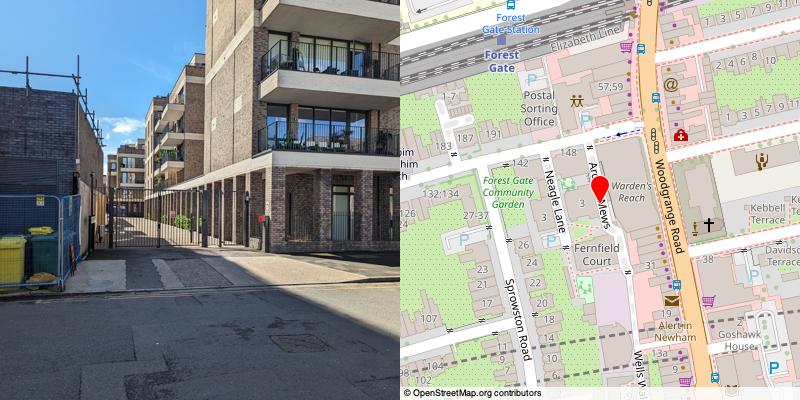
Part of a whole lot of redevelopment that’s been going on in this area, in no small part because the Elizabeth Line has brought Forest Gate to the tube map. The sales brochure excitedly boasts that if you had lived here in the 1960s, you could have gone to see Jimi Hendrix and The Who at some long defunct music venues, as though this in some way helps you as a potential modern-day resident of one of these flats. Maybe there’s a secret Gary Sparrow-type time portal on site?
#15 Sprowston Mews, Newham, E7
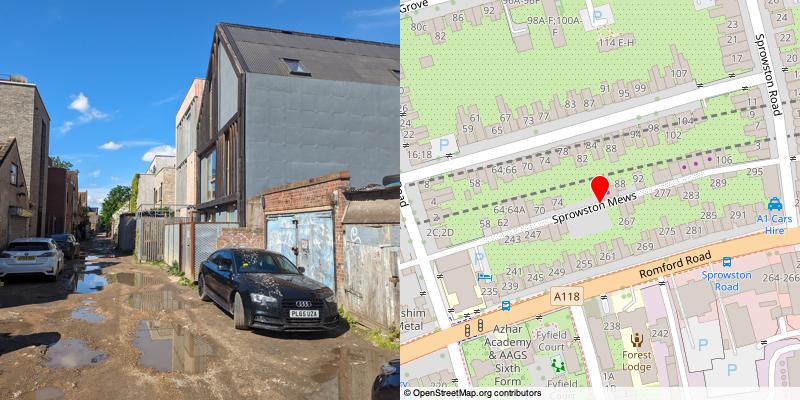
An unadopted road, meaning that the roadway itself is private and the council has no responsibility to maintain it, hence a lack of basic features such as e.g. ‘a road’. Has become the site of a sort of ad hoc modernist housing development with various Grand Designs-type boxes having sprung up out of the mud, presumably because when your neighbours are car workshops they’re less likely to write letters to the council complaining about the impact on the ‘character of the area’?
#16 Atherton Mews, Newham, E7
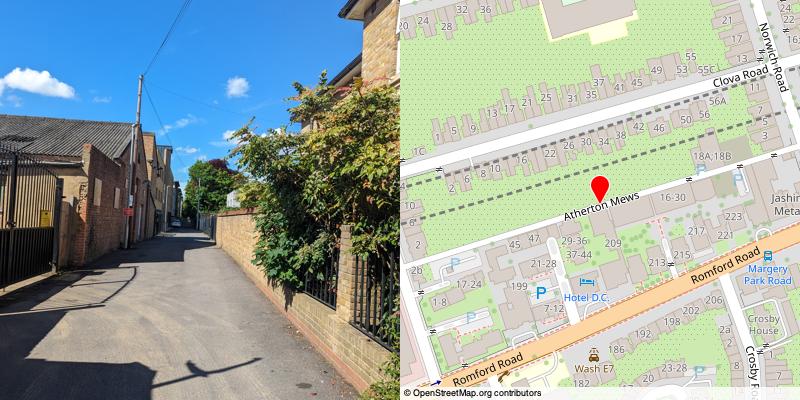
Immediate neighbour of Sprowston Mews that gained a grim, unlikely, notoriety in 2003 when two owners of a hotel that backed onto it were machine-gunned to death in a dispute over parking.
#17 Onyx Mews, Newham, E15
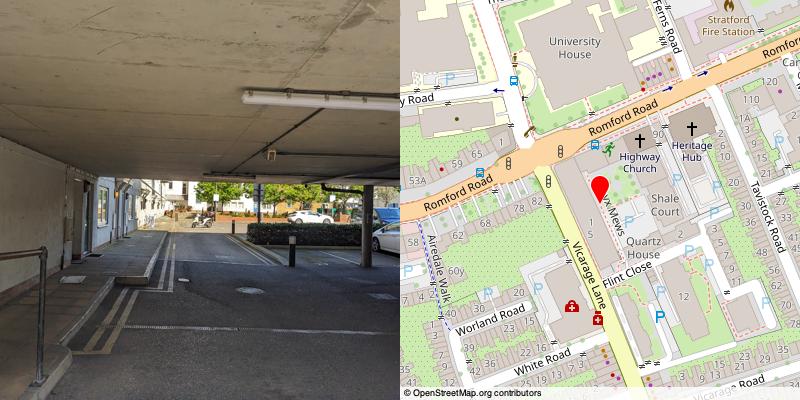
My attempt to visit Onyx Mews was almost defeated by it being behind two separate locked gates, but I managed to follow someone through the first gate so I could at least stand at the second gate and peer through to discover: quite a boring housing development. All the blocks have names with a rock/mineral theme - Shale Court, Ammonite House, Flint Close, and so on, which is dumb because the estate incorporates an older, rather grander, building that once housed the local electricity board, so you’d think something like Ohm Mews would be more appropriate. I’ll start a Change.org petition.
#18 Manbey Mews, Newham, E15
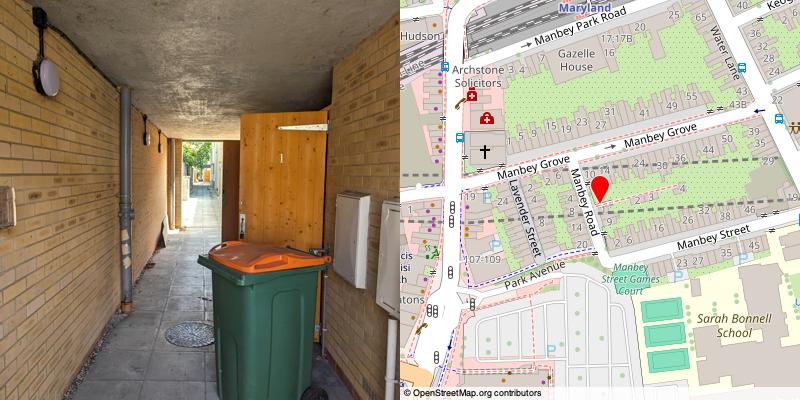
“Four stunning ecohouses” built on former industrial land, it says here, though as they’re behind a gate all I can confirm is that they have at least one green bin, which I guess is ‘eco’.
Name initially seems like a no-brainer as the mews is off Manbey Road, which joins Manbey Grove and Manbey Street, but there is a wrinkle. Curiously there is a (defunct) pub on the corner of Manbey Street called The Manby (sic) Arms. Possibly the pub’s spelling was in fact correct - older maps use the Manby spelling for the streets and the land appears to have been owned by a Manby family at some point. On the other hand there are photos showing that the pub used to be called The Manbey Arms so who knows what the hell is going on, just get your shit together guys.
In the 1960s the pub, however it was spelt then, had a resident donkey called Bass, who apparently drank pints of stout.
#19 Luxembourg Mews, Newham, E15
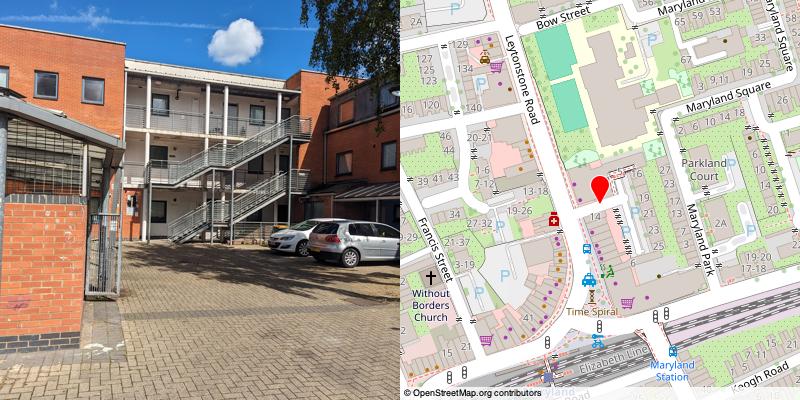
I can’t find any particular local connection to Luxembourg, so perhaps there was just something continental in the air when this housing went up - the block of flats is called Bordeaux House. Newham voted Remain, for what it’s worth.
#20 Oriens Mews, Newham, E20
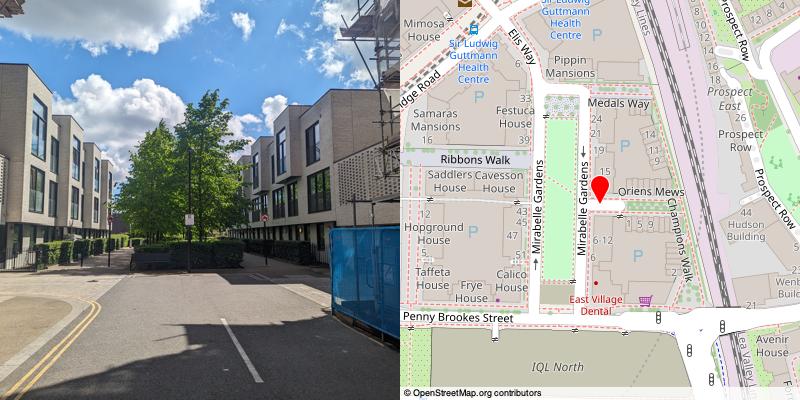
The only Mews in the Olympic village. ‘Oriens’ is Latin for East, so I assume the ‘assigning the road names’ meeting had got very boring and everyone just wanted to get down the pub.
The E20 postcode district was created in 2011 for the use of the buildings in the 2012 Olympic Park and subsequent surrounding developments, and has led to a geographical anomaly in the soap opera Eastenders, which had picked previously non-existent E20 for its fictional setting of Walford. I hope they had an entire week of special episodes explaining this.
Total mewses visited: 20/23803
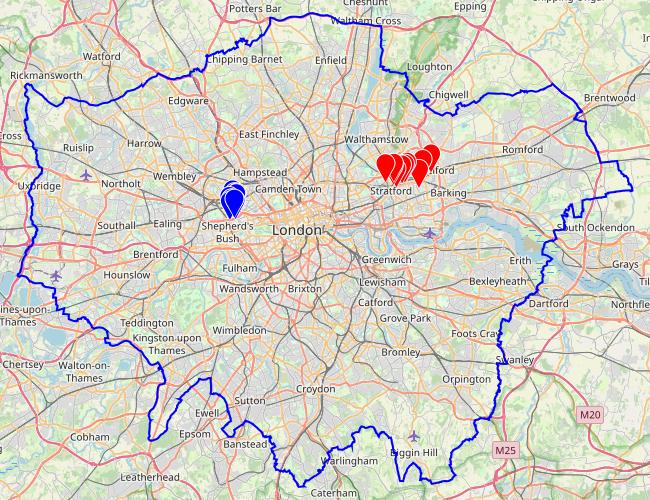
If you’ve scrolled down searching for the donkey, sorry it’s in a link somewhere above so you’ll have to go back and read the newsletter to find it.
As a point of clarification here, my list of Mewses only includes roads with Mews in the name, i.e. I am not visiting streets that are simply in the ‘classic’ mews style. If you think that is wrong you are free to write your own list as long as you promise not to tell me about it.
Unless it turns out that they are bad in some way or other.
If you read last week’s newsletter you may notice that this has dropped by one as I discovered that two mewses on the list were actually one mews listed under two names.
Add a comment: